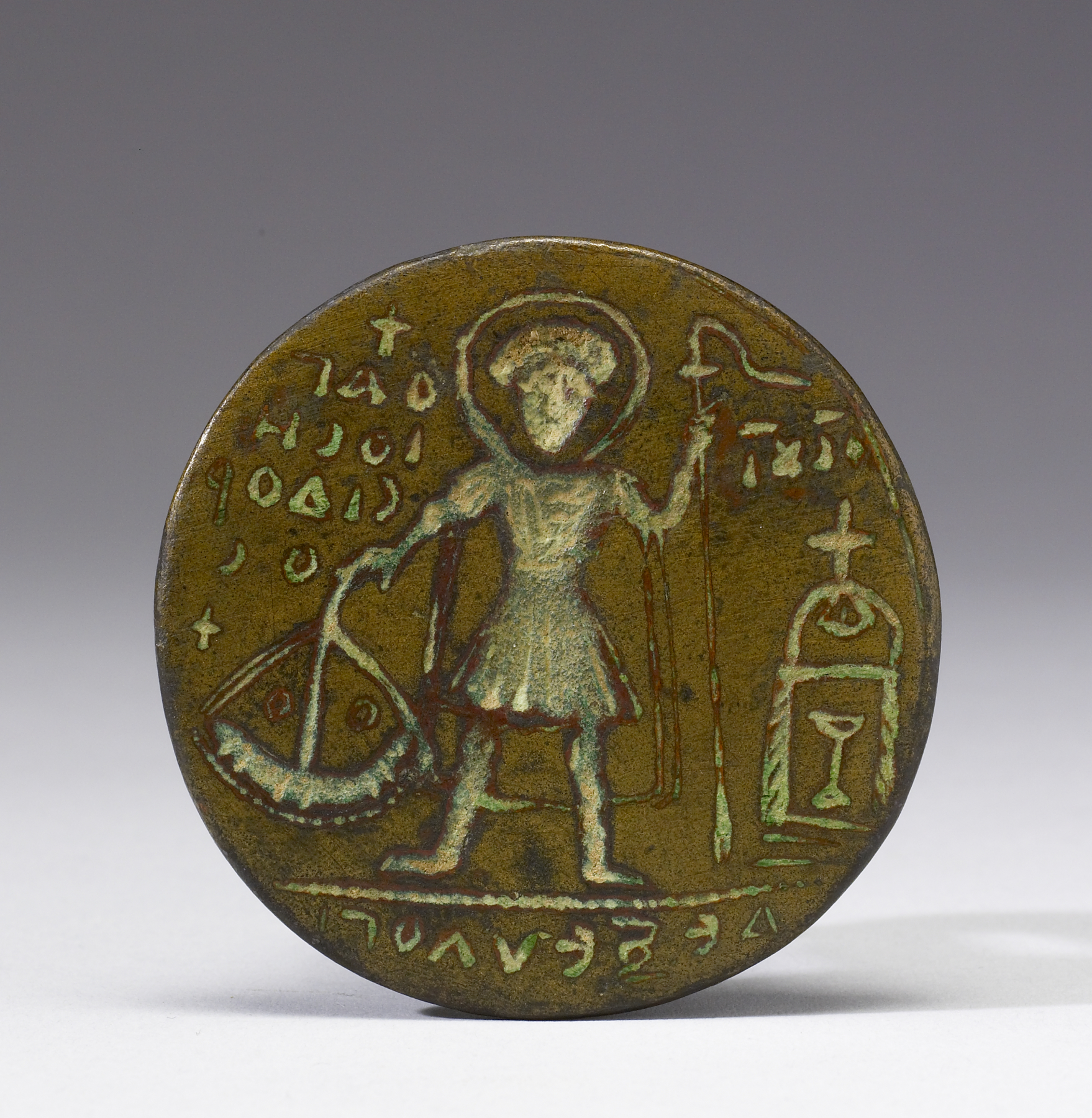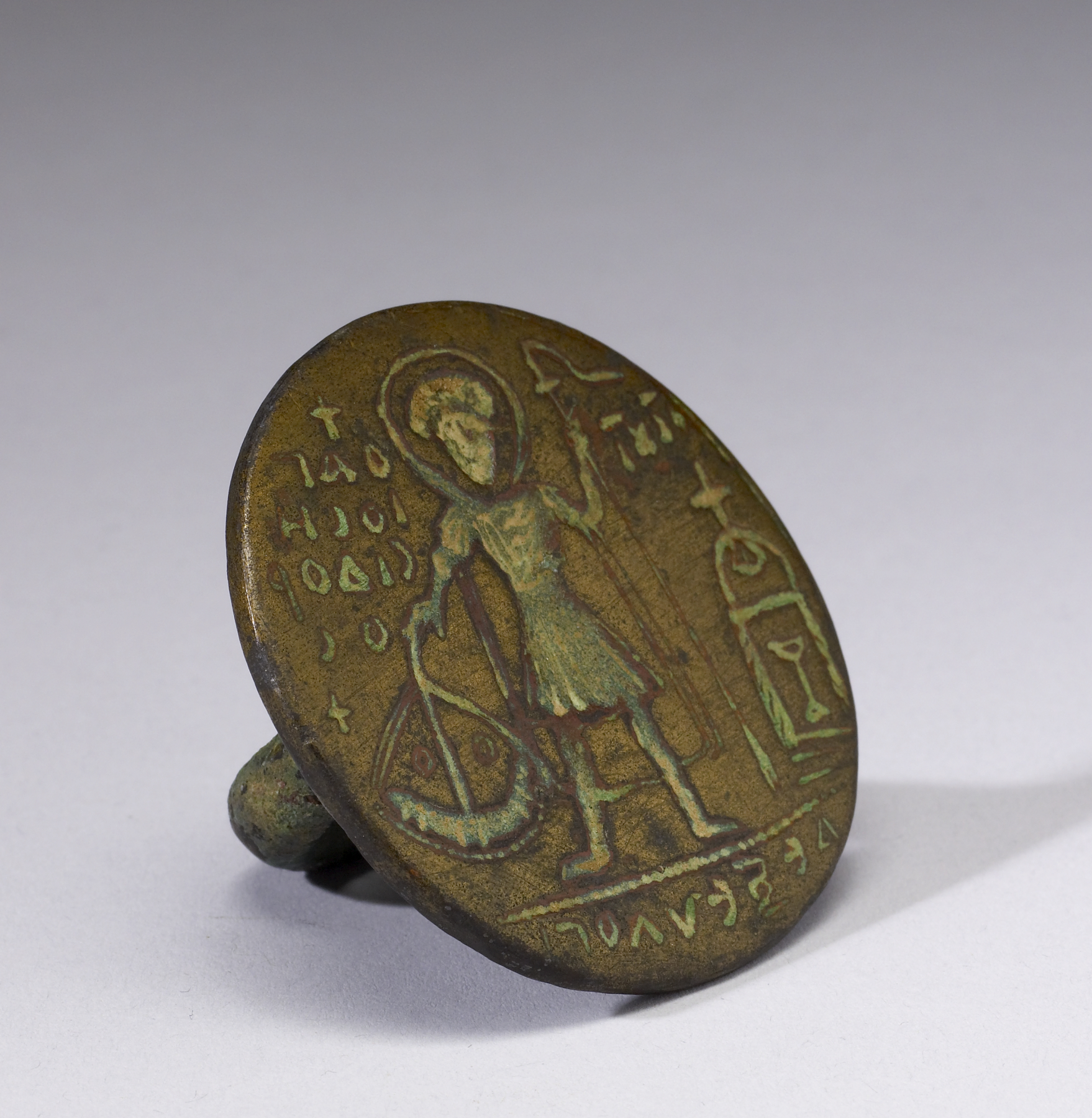Pilgrim Stamp of Saint Isidore
(Byzantium and Early Russia)
St. Isidore was martyred on the Greek island of Chios in AD 251. The well into which his body was thrown later became a healing shrine, represented at the right. The ship to the left refers to Isidore's role as patron saint of sailors, as well as to the ships that carried pilgrims to his island shrine. This stamp, used to produce pilgrim tokens, has a backward inscription that becomes legible when imprinted in clay.
Inscription
Provenance
Provenance (from the French provenir, 'to come from/forth') is the chronology of the ownership, custody, or location of a historical object. Learn more about provenance at the Walters.
Dikran Kelekian, Constantinople and Paris [date of acquisition unknown], by purchase; Henry Walters, Baltimore, 1912, by purchase; Walters Art Museum, 1931, by bequest.
Exhibitions
| 2010-2011 | Treasures of Heaven. The Cleveland Museum of Art, Cleveland; The Walters Art Museum, Baltimore; The British Museum, London. |
| 1982 | Sacred Souvenirs: Byzantine Pilgrimage Art. Dumbarton Oaks, Washington. |
| 1947 | Early Christian and Byzantine Art. Baltimore Museum of Art, Baltimore. |
Conservation
| Date | Description | Narrative |
|---|---|---|
| 3/1/1982 | Loan Consideration | examined for loan |
Geographies
Greece, Chios
(Place of Origin)
Greece, Thessaloniki (Place of Discovery)
Measurements
H: 2 5/16 x W: 2 3/8 x D: 1 1/2 in. (5.9 x 6 x 3.8 cm)
Credit Line
Acquired by Henry Walters, 1912
Location in Museum
Accession Number
In libraries, galleries, museums, and archives, an accession number is a unique identifier assigned to each object in the collection.
In libraries, galleries, museums, and archives, an accession number is a unique identifier assigned to each object in the collection.
54.230




